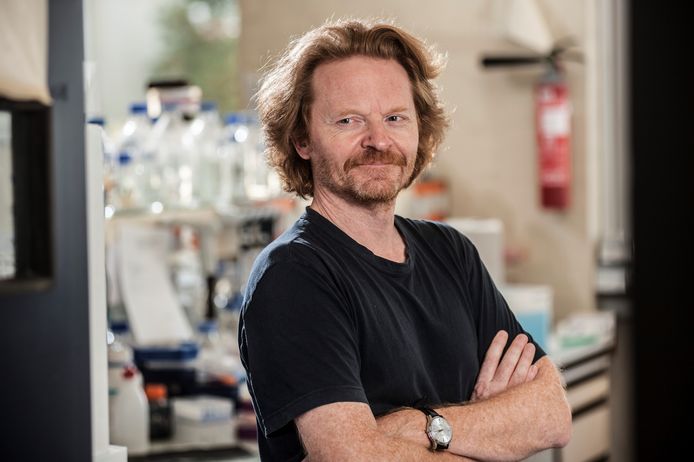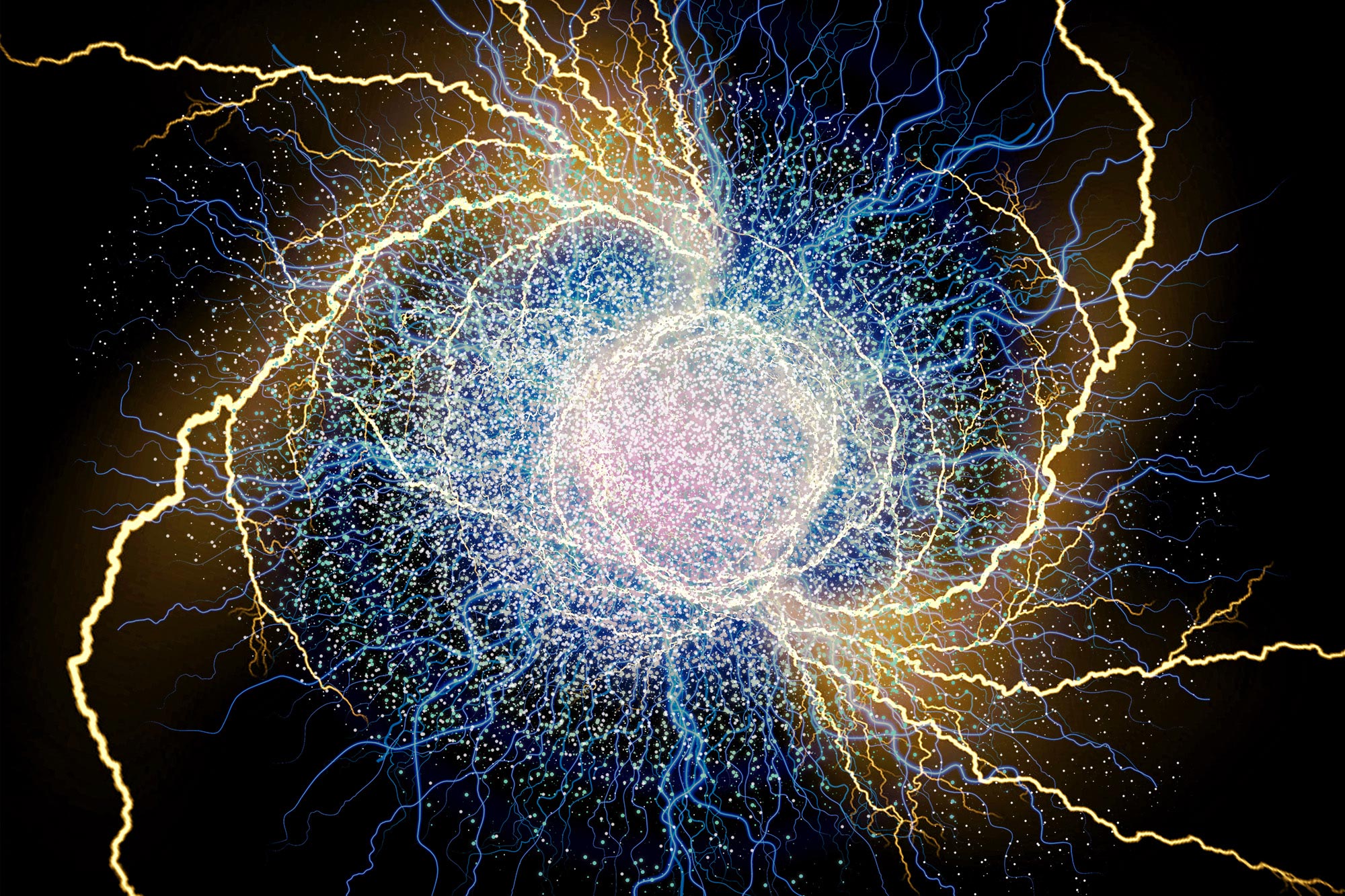
Οι επιστήμονες διεξήγαγαν ένα πείραμα που καταδεικνύει τη χρονική αντιστροφή των ηλεκτρομαγνητικών κυμάτων, η οποία έχει πιθανές επιπτώσεις στην ασύρματη επικοινωνία και στους οπτικούς υπολογιστές.
Αυτή η ανακάλυψη θέτει τα θεμέλια για επαναστατικές εφαρμογές στις ασύρματες επικοινωνίες και στους οπτικούς υπολογιστές.
Όταν κοιταζόμαστε στον καθρέφτη, έχουμε συνηθίσει να βλέπουμε τα πρόσωπά μας να κοιτάζουν πίσω μας. Οι ανακλώμενες εικόνες παράγονται από ηλεκτρομαγνητικά κύματα φωτός που αναπηδούν από την επιφάνεια του καθρέφτη, δημιουργώντας ένα κοινό φαινόμενο που ονομάζεται χωρική ανάκλαση. Ομοίως, οι χωρικές αντανακλάσεις των ηχητικών κυμάτων σχηματίζουν ηχώ που μεταφέρουν τα λόγια μας πίσω σε εμάς με την ίδια σειρά με την οποία ειπώθηκαν.
Για περισσότερες από έξι δεκαετίες, οι επιστήμονες υποθέτουν ότι μπορεί να παρατηρηθεί μια διαφορετική μορφή ανακλάσεων κυμάτων, γνωστή ως ανακλάσεις κυμάτων. Ο χρόνος μουή χρόνος, Αντανακλάσεις. Σε αντίθεση με τις χωρικές αντανακλάσεις, οι οποίες προκύπτουν όταν το φως ή τα ηχητικά κύματα χτυπούν ένα όριο όπως ένας καθρέφτης ή ένας τοίχος σε μια συγκεκριμένη θέση στο χώρο, οι χρονικές αντανακλάσεις εμφανίζονται όταν ένα κύμα ταξιδεύει απότομα και αλλάζει τις ιδιότητές του κατά μήκος του. όλος ο χώρος. Σε ένα τέτοιο γεγονός, ο χρόνος ενός μέρους του κύματος αντιστρέφεται και η συχνότητά του μετατοπίζεται σε μια νέα συχνότητα.

(α) Συμβατικά χωρικά αντανακλαστικά: ένα άτομο βλέπει το πρόσωπό του όταν κοιτάζει σε έναν καθρέφτη ή όταν μιλάει, οι ηχώ επιστρέφουν με την ίδια σειρά. (β) Χρονικές αντανακλάσεις: ένα άτομο βλέπει την πλάτη του όταν κοιτάζεται σε έναν καθρέφτη και βλέπει τον εαυτό του με διαφορετικά χρώματα. Ακούνε τις ηχώ τους με αντίστροφη σειρά, παρόμοια με μια ταινία προς τα πίσω. Πίστωση: Andrea Allo
Μέχρι σήμερα, αυτό το φαινόμενο δεν έχει παρατηρηθεί καθόλου για ηλεκτρομαγνητικά κύματα. Ο θεμελιώδης λόγος για αυτήν την έλλειψη στοιχείων είναι ότι οι οπτικές ιδιότητες ενός υλικού δεν μπορούν εύκολα να αλλάξουν με την ταχύτητα και το μέγεθος που θα οδηγούσαν σε χρονικές αντιστροφές. Τώρα, ωστόσο, σε μια πρόσφατα δημοσιευμένη εργασία στο
“This has been really exciting to see, because of how long ago this counterintuitive phenomenon was predicted, and how different time-reflected waves behave compared to space-reflected ones,” said the paper’s corresponding author Andrea Alù, Distinguished Professor of Physics at The City University of New York Graduate Center and founding director of the CUNY ASRC Photonics Initiative. “Using a sophisticated metamaterial design, we were able to realize the conditions to change the material’s properties in time both abruptly and with a large contrast.”
This feat caused a significant portion of the broadband signals traveling in the metamaterial to be instantaneously time reversed and frequency converted. The effect forms a strange echo in which the last part of the signal is reflected first. As a result, if you were to look into a time mirror, your reflection would be flipped, and you would see your back instead of your face. In the acoustic version of this observation, you would hear sound similar to what is emitted during the rewinding of a tape.

Illustration of the experimental platform used to realize time reflections. A control signal (in green) is used to uniformly activate a set of switches distributed along a metal stripline. Upon closing/opening the switches, the electromagnetic impedance of this tailored metamaterial is abruptly decreased/increased, causing a broadband forward-propagating signal (in blue) to be partially time-reflected, (in red) with all its frequencies converted. (Adapted from Nature Physics.) Credit: Andrea Alu
The researchers also demonstrated that the duration of the time-reflected signals was stretched in time due to broadband frequency conversion. As a result, if the light signals were visible to our eyes, all their colors would be abruptly transformed, such that red would become green, orange would turn to blue, and yellow would appear violet.
To achieve their breakthrough, the researchers used engineered metamaterials. They injected broadband signals into a meandered strip of metal that was about 6 meters long, printed on a board and loaded with a dense array of electronic switches connected to reservoir capacitors. All the switches were then triggered at the same time, suddenly and uniformly doubling the impedance along the line. This quick and large change in electromagnetic properties produced a temporal interface, and the measured signals faithfully carried a time-reversed copy of the incoming signals.
The experiment demonstrated that it is possible to realize a time interface, producing efficient time reversal and frequency transformation of broadband electromagnetic waves. Both these operations offer new degrees of freedom for extreme wave control. The achievement can pave the way for exciting applications in wireless communications and for the development of small, low-energy, wave-based computers.
“The key roadblock that prevented time reflections in previous studies was the belief that it would require large amounts of energy to create a temporal interface,” said Gengyu Xu, the paper’s co-first author and a postdoctoral researcher at CUNY ASRC. “It is very difficult to change the properties of a medium quick enough, uniformly, and with enough contrast to time reflect electromagnetic signals because they oscillate very fast. Our idea was to avoid changing the properties of the host material, and instead create a metamaterial in which additional elements can be abruptly added or subtracted through fast switches.”
“The exotic electromagnetic properties of metamaterials have so far been engineered by combining in smart ways many spatial interfaces,” added co-first author Shixiong Yin, a graduate student at CUNY ASRC and at The City College of New York. “Our experiment shows that it is possible to add time interfaces into the mix, extending the degrees of freedom to manipulate waves. We also have been able to create a time version of a resonant cavity, which can be used to realize a new form of filtering technology for electromagnetic signals.”
The introduced metamaterial platform can powerfully combine multiple time interfaces, enabling electromagnetic time crystals and time metamaterials. Combined with tailored spatial interfaces, the discovery offers the potential to open new directions for photonic technologies, and new ways to enhance and manipulate wave-matter interactions.
Reference: “Observation of temporal reflection and broadband frequency translation at photonic time interfaces” by Hady Moussa, Gengyu Xu, Shixiong Yin, Emanuele Galiffi, Younes Ra’di and Andrea Alù, 13 March 2023, Nature Physics.
DOI: 10.1038/s41567-023-01975-y
This research was partially supported by the Air Force Office of Scientific Research and the Simons Foundation.

“Ερασιτέχνης διοργανωτής. Εξαιρετικά ταπεινός web maven. Ειδικός κοινωνικών μέσων Wannabe. Δημιουργός. Thinker.”



